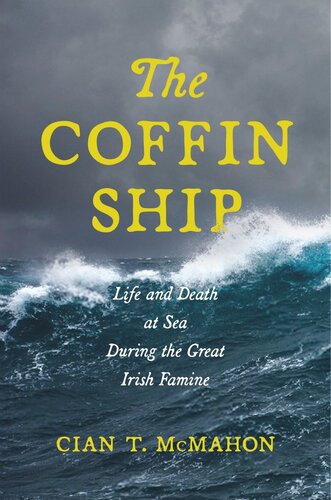

Most ebook files are in PDF format, so you can easily read them using various software such as Foxit Reader or directly on the Google Chrome browser.
Some ebook files are released by publishers in other formats such as .awz, .mobi, .epub, .fb2, etc. You may need to install specific software to read these formats on mobile/PC, such as Calibre.
Please read the tutorial at this link: https://ebookbell.com/faq
We offer FREE conversion to the popular formats you request; however, this may take some time. Therefore, right after payment, please email us, and we will try to provide the service as quickly as possible.
For some exceptional file formats or broken links (if any), please refrain from opening any disputes. Instead, email us first, and we will try to assist within a maximum of 6 hours.
EbookBell Team

5.0
50 reviewsA vivid, new portrait of Irish migration through the letters and diaries of those who fled their homeland during the Great Famine
The standard story of the exodus during Ireland’s Great Famine is one of tired clichés, half-truths, and dry statistics. In The Coffin Ship, a groundbreaking work of transnational history, Cian T. McMahon offers a vibrant, fresh perspective on an oft-ignored but vital component of the migration experience: the journey itself.
Between 1845 and 1855, over two million people fled Ireland to escape the Great Famine and begin new lives abroad. The so-called “coffin ships” they embarked on have since become infamous icons of nineteenth-century migration. The crews were brutal, the captains were heartless, and the weather was ferocious. Yet the personal experiences of the emigrants aboard these vessels offer us a much more complex understanding of this pivotal moment in modern history. Based on archival research on three continents and written in clear, crisp prose, The Coffin Ship analyzes the emigrants’ own letters and diaries to unpack the dynamic social networks that the Irish built while voyaging overseas. At every step of the journey—including the treacherous weeks at sea—these migrants created new threads in the worldwide web of the Irish diaspora.
Colored by the long-lost voices of the emigrants themselves, this is an original portrait of an overlooked aspect of the migration process that left an undeniable mark on their new lives overseas. An indispensable read, The Coffin Ship makes an ambitious argument for placing the sailing ship alongside the tenement and the factory floor as a central, dynamic element of migration history.